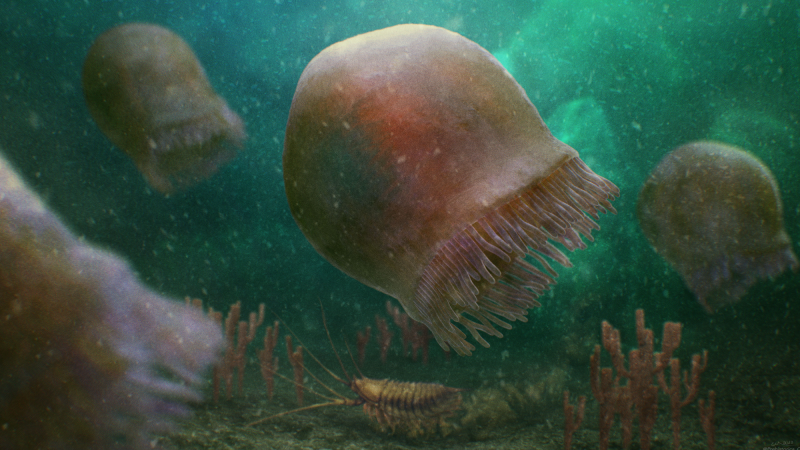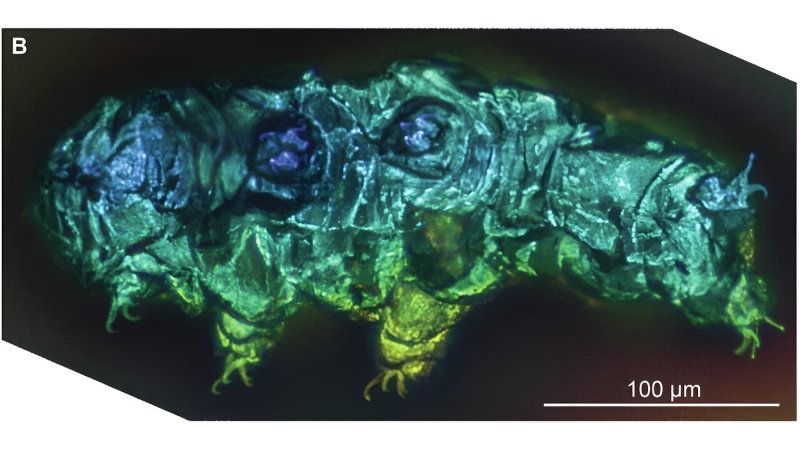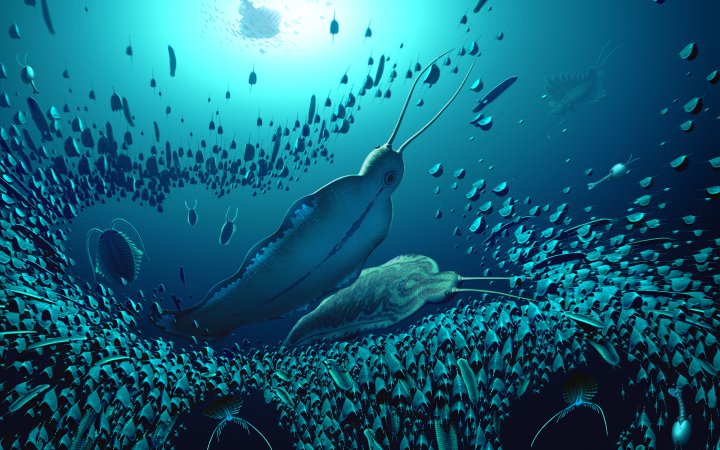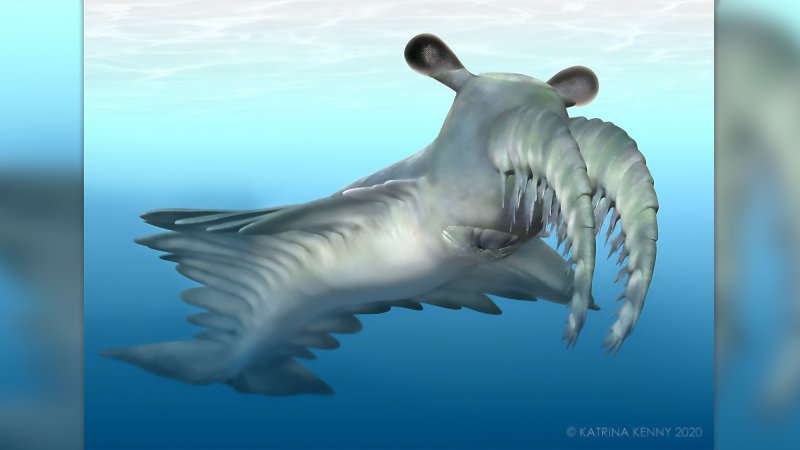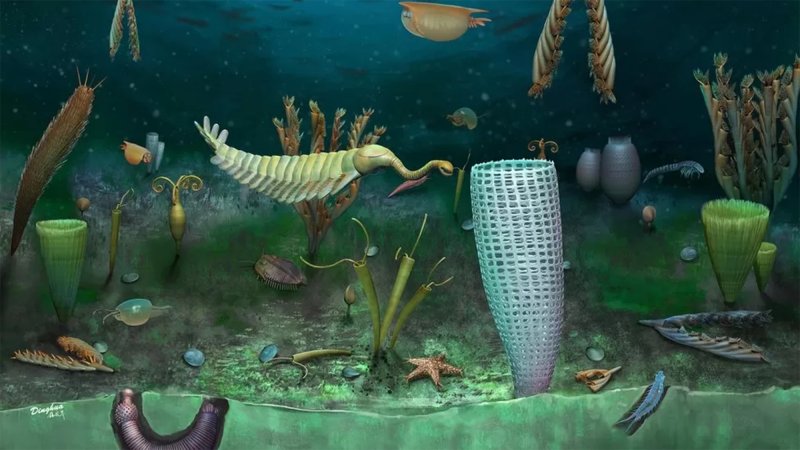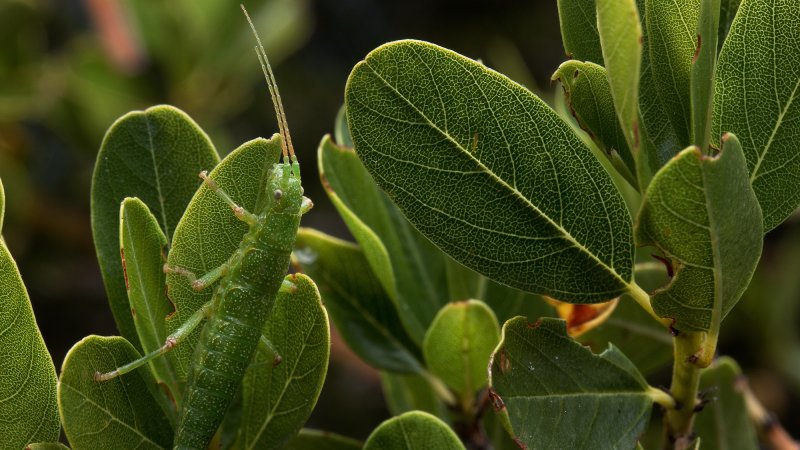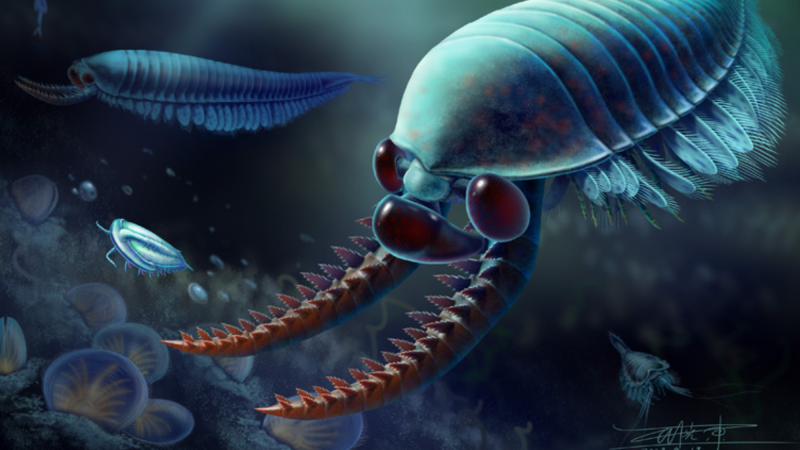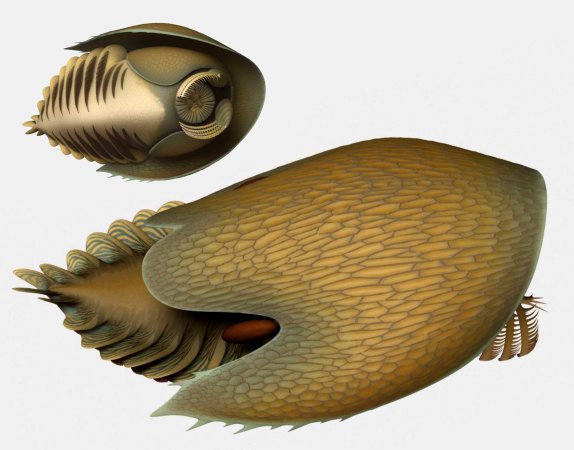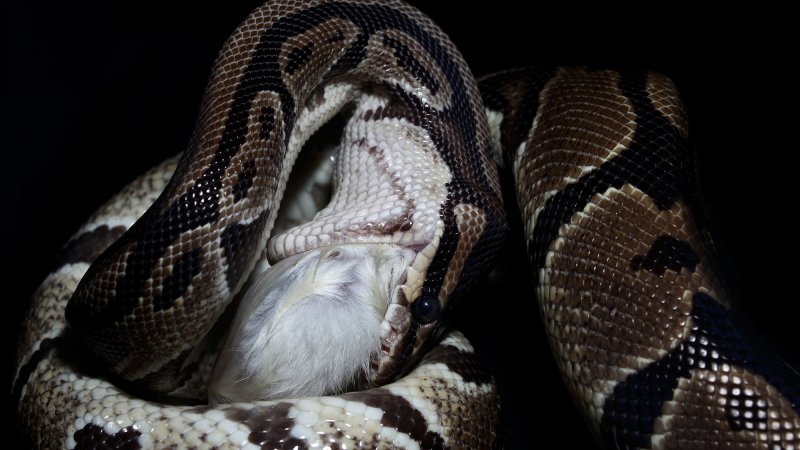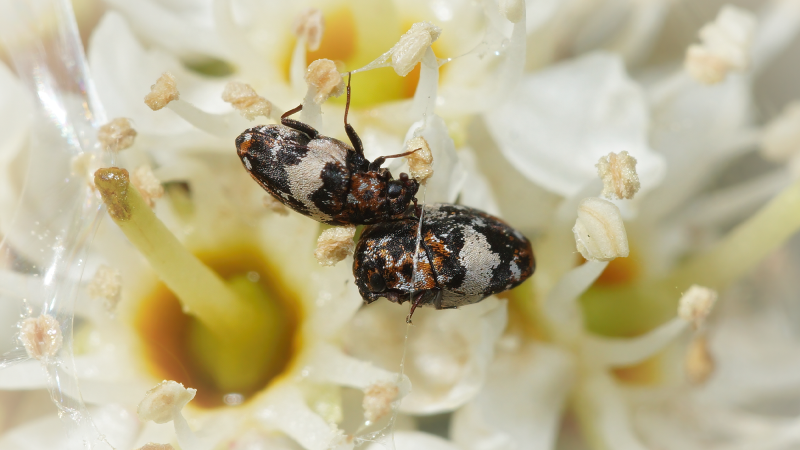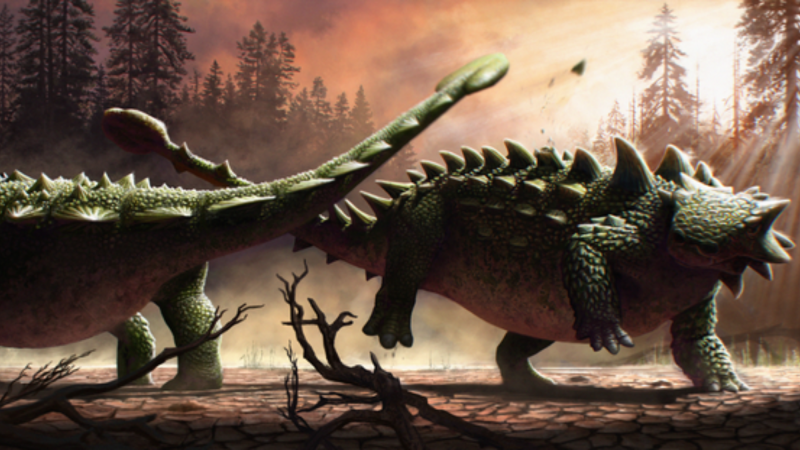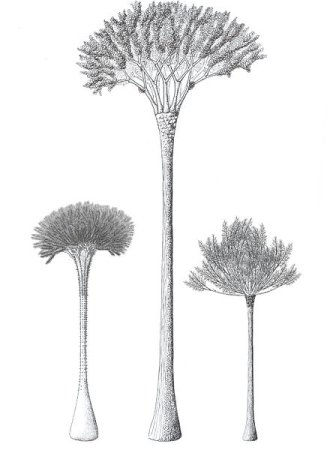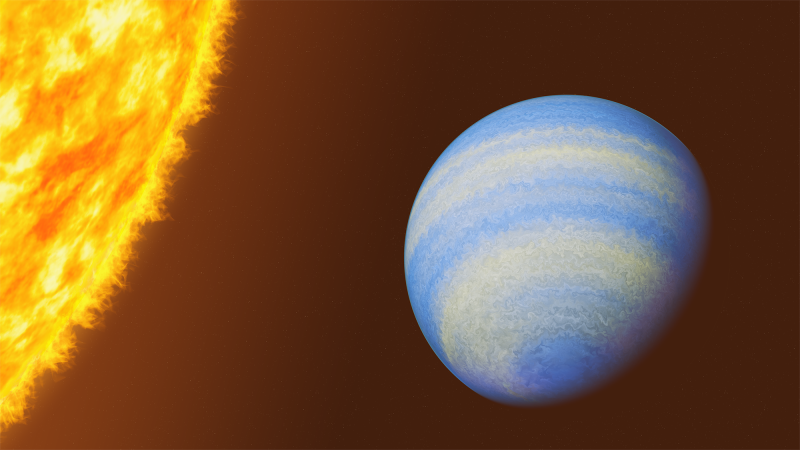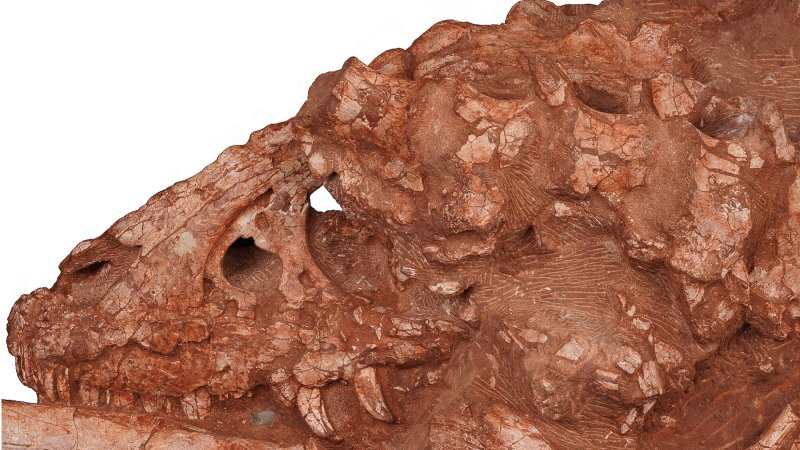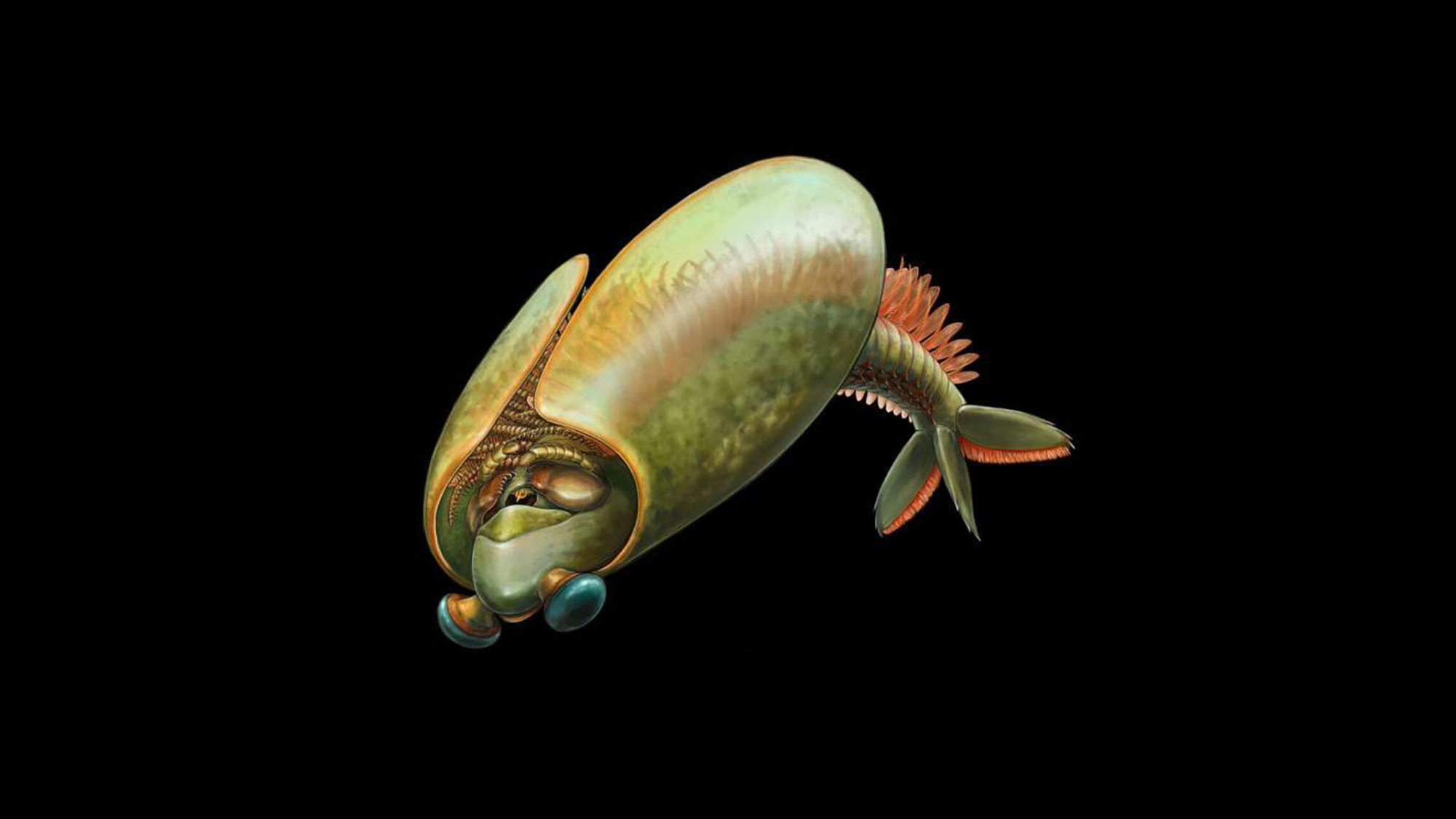

Over 500 million years ago, a taco-shaped marine organism named Odaraia swam up from the bottom of the ocean and up into the water itself. Despite being only about 7.8 inches long, the journey that Odaraia undertook was a pretty big deal for the evolution of some of our planet’s most prevalent animals.
A new analysis of some Odaraia fossils found over 100 years ago reveal that it had mandibles–paired lower jaws. This Cambrian period critter is now considered a part of a specific group of arthropods called the mandibulates, who went on to become some of the most successful animals on our planet in and out of the water. This new look at the old fossils reveals new details about early arthropod evolution and species diversification during an explosion of life millions of years ago. The findings are described in a study published July 23 in the journal Proceedings B.
[Related: A three-eyed organism roamed the seas half a billion years ago.]
Finding mandibles
The specimen that the team from the Royal Ontario Museum in Toronto examined was first discovered in the fossil-rich Burgess Shale formation in British Columbia over 100 years ago. Fossils from this area usually boast well-preserved structures, animals, and ecosystems that would have decayed or completely disappeared from the fossil record. However, mandibulates like Odaraia are generally more rare in the fossil record, even in places like the Burgess Shale.
Odaraia was almost 7.8 inches long. Its taco-shaped carapace, large head and eyes, and a tail that looks like a submarine’s keel are among its most distinctive features. But there was more on this oblong body waiting to be found.

In the new study, the team identified a pair of large appendages with grasping jagged edges near the creature’s mouth. These indicate that Odaraia had mandibles, a key feature of the mandibulate group of animals. Odaraia is possibly one of the earliest known members of this group, which includes modern insects and crustaceans. When the team conducted a detailed analysis of its more than 30 pairs of legs, they found an intricate system of small and large spines. These spines could intertwine and capture smaller prey similar to a fishing net. The team believes that these spines helped some of these first mandibulates leave the ocean floor and into the water column. This upward movement also planted the seeds for their future ecological success.
“The head shield of Odaraia envelops practically half of its body including its legs, almost as if it were encased in a tube. Previous researchers had suggested this shape would have allowed Odaraia to gather its prey, but the capturing mechanism had eluded us, until now,” study co-author and paleontologist Alejandro Izquierdo-López said in a statement. “Odaraia had been beautifully described in the 1980s, but given the limited number of fossils at that time and its bizarre shape, two important questions had remained unanswered: is it really a mandibulate? And what was it feeding on?”
Up, up, and away
Early mandibulates like Odaraia were part of a community of large fauna that were able to travel up from the marine bottom-dwelling ecosystems that dominated the Cambrian period, to the water column’s upper layers. It is likely that types of communities may have enriched the water column and facilitated a transition towards more complex ecosystems.
The Cabmrian period is when most vertebrates and fish began to appear in the fossil record. The evolution of eyes, legs or shells also began during this major divergence of animal groups beginning over 500 million years ago. This diversification includes the mandibulates, which are one of the major groups of arthropods–animals with jointed limbs.
Mandibulates are also considered an evolutionary success story, since they diversified enough to represent over half of all current species on Earth. They are living in habitats all over the world–centipedes underground, bees flying over meadows, and crabs digging in the sand and crossing the road.
[Related: Ancient ‘weird shrimp from Canada’ used bizarre appendages to scarf up soft prey.]
Still, they had a more humble beginning. During the Cambrian, the first mandibulates were marine animals, and most had distinct head shields or carapaces that paleontologists will continue to search for in the fossil record.
“The Burgess Shale has been a treasure trove of paleontological information,” study co-author and Royal Ontario Museum curator Jean-Bernard Caron said in a statement. “Thanks to the work we have been doing at the ROM on amazing fossil animals such as Tokummia and Waptia, we already know a substantial amount about the early evolution of mandibulates. However, some other species had remained quite enigmatic, like Odaraia.”
